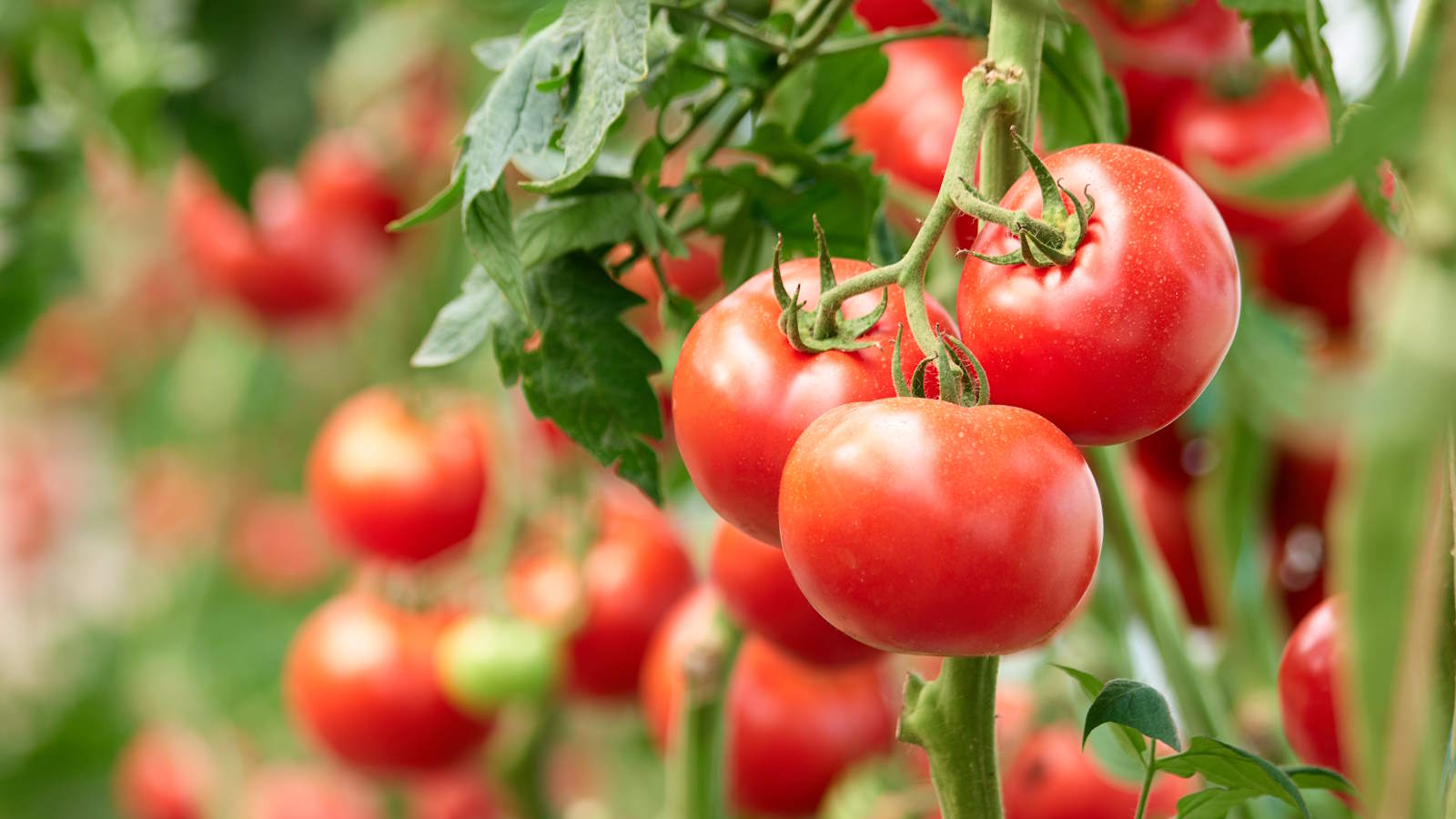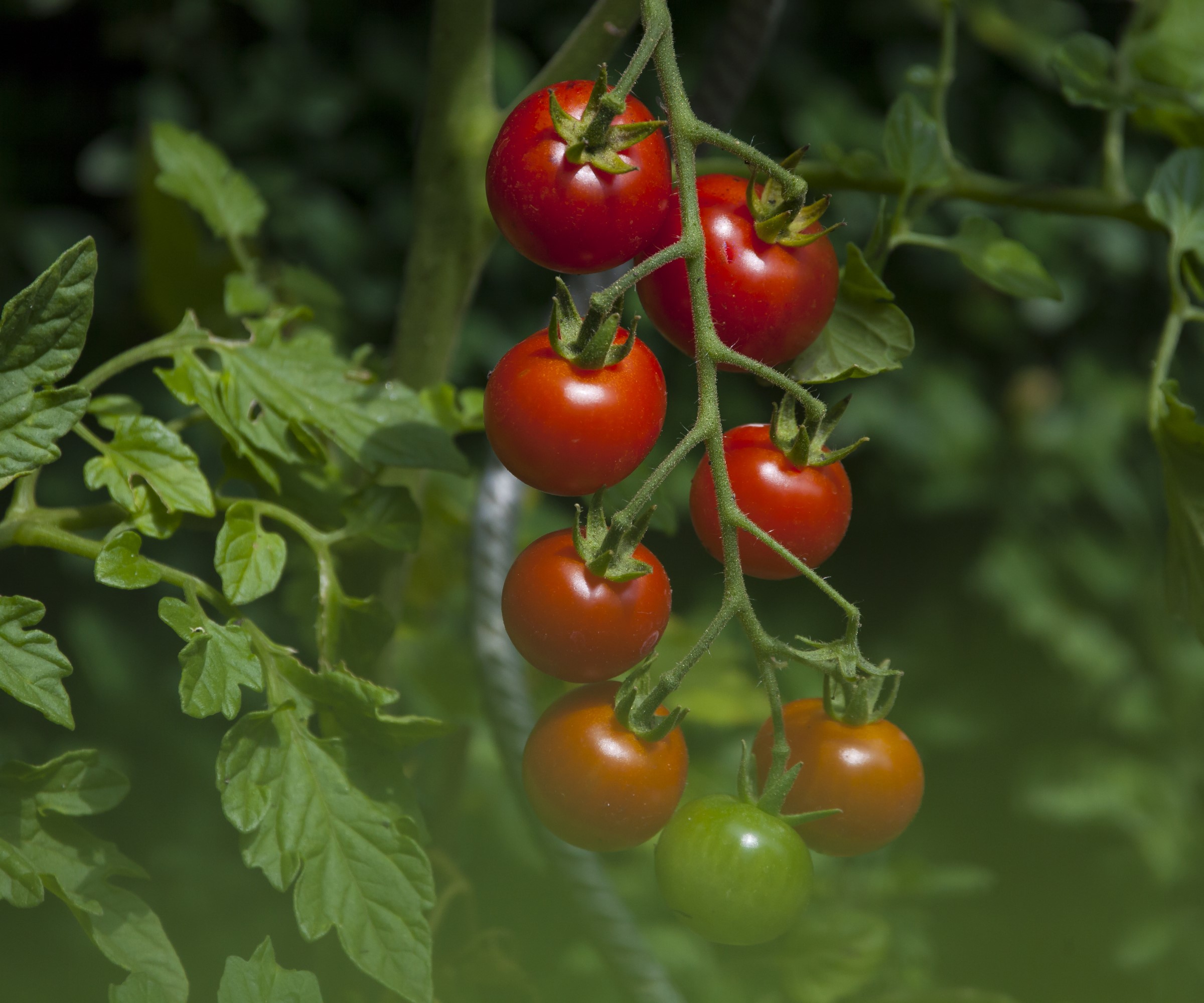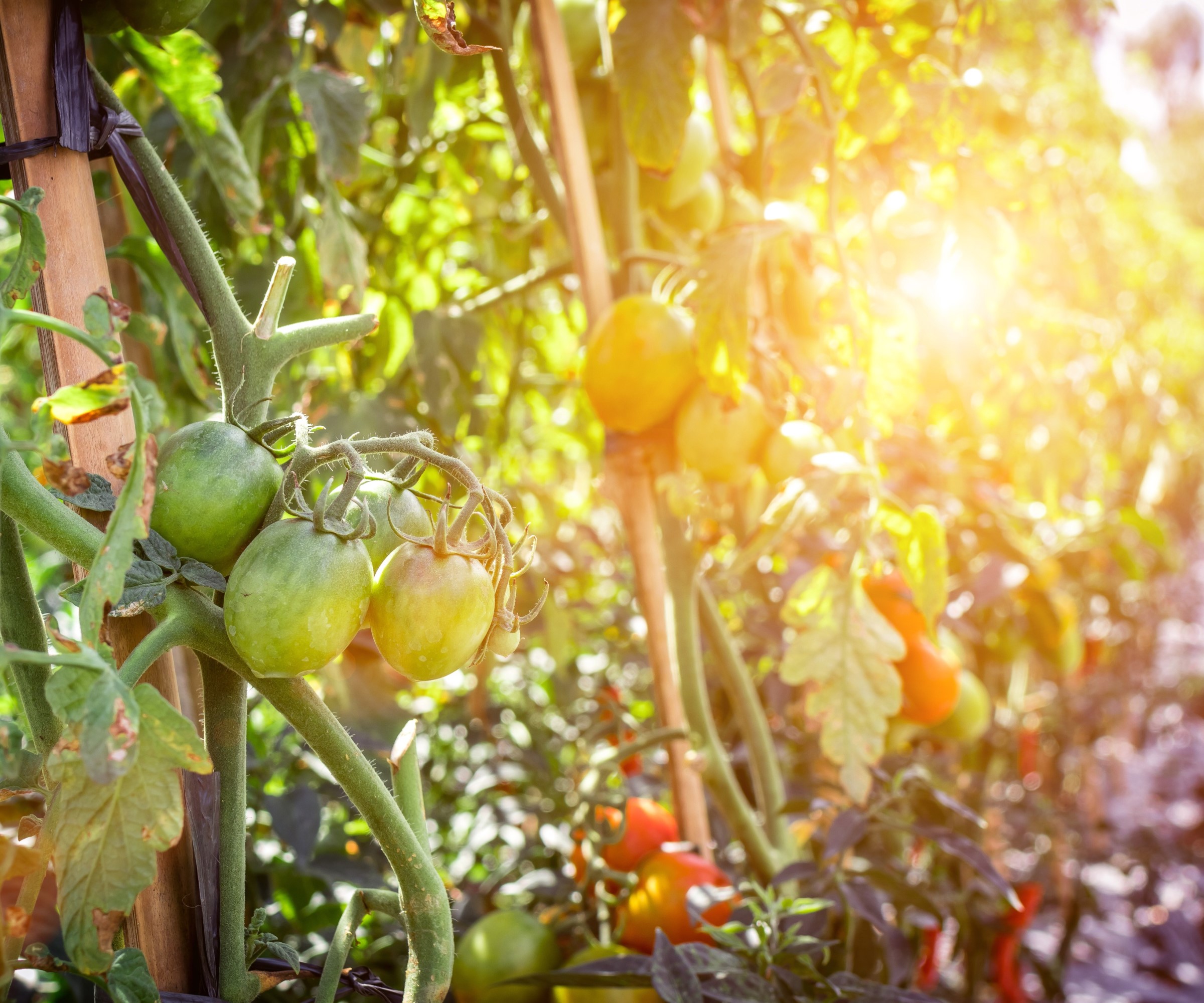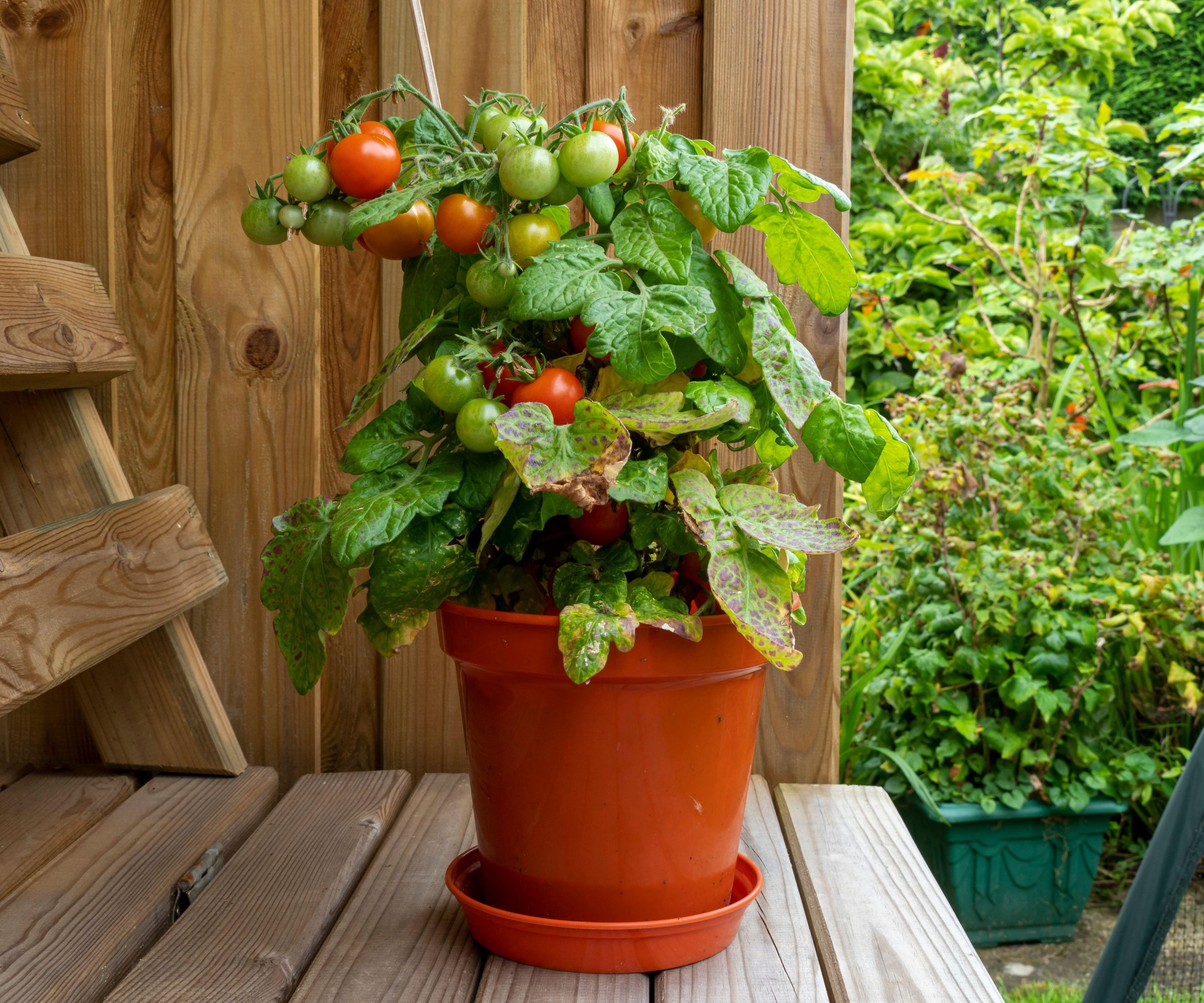You can overwinter tomato plants and grow them indoors, but is it worth doing?
It is possible to overwinter tomatoes in two ways - discover why you may want to try this gardening experiment


Tomatoes are hugely-popular heat-loving crops that are grown as annuals each year by the vast majority of growers. But it may surprise you to know that they can be grown as perennials by overwintering the plants indoors.
There are two ways to overwinter tomato plants. They can be brought inside to merely survive the winter, or you can try to continue getting fruits off the plants even during the colder months.
While not a common practice, overwintering tomato plants can offer benefits if you want to experiment growing tomatoes in this way. You can have fruits year-round, get earlier tomatoes each year, and also extend the season if you live in a colder climate.

Tomatoes are one of the most popular crops to grow at home
Can you overwinter tomatoes?
Tomato plants are not frost-tolerant and cannot survive cold winters, though overwintering can be done with proper knowledge and care.
When overwintering tomatoes, the aim primarily should be for the plants to survive until spring. The tomatoes can then be planted again to start producing fruit in the warmer temperatures. They can be grown to continue fruiting, but the downside is that it is more expensive and will require a lot of effort and equipment.

Tomatoes need heat and light to develop and ripen fruits
How to keep tomatoes over winter
The location is going to be hugely important to the success of overwintering tomato plants. Any spot for overwintering tomatoes needs to be one with warmth and lots of sunlight. The ideal locations would be a heated greenhouse, conservatory, porch, or a south-facing window inside the home. If you do have a backyard greenhouse that is currently unheated, there are several ways to heat a greenhouse if you do want to use the structure to overwinter tomatoes.
‘The temperature should be at least 65°F to keep the plants alive,’ says Joe Masabni, PhD- Assistant Professor and Extension Horticulturist (Vegetables) at Texas A&M AgriLife. ‘And no additional artificial light is necessary because you are not trying to get a crop.’
Tomatoes growing outdoors in a kitchen garden need to be lifted and potted up to be brought indoors for winter. Use large pots with good holes in the bottom for drainage and topped up with a good quality potting compost if required.
‘Try to dig up the root ball with the garden soil with it and place in the pot,’ adds Joe. ‘Do not clean the soil and plant a bare root plant in the new pot.’
In a similar way to hardening off plants when they come outside for summer, you do need to acclimatize plants before overwintering plants indoors.
The temperature should be over 65°F to ensure that tomatoes survive. However, if you want to continue getting fruit off your tomatoes then the temperature should be set a little bit higher, up to 70-75°F. A heater with temperature control, such as the Bio Green Phoenix Greenhouse Heater available at Amazon, is advised to maintain the correct level of heat when overwintering tomato plants.
The light levels in winter will also not be sufficient alone to get fruit, so artificial grow lights will be required to run for up to 18 hours a day to supplement the natural light. Plants will need to be pollinated by hand too and the tomatoes fertilized every 4-6 weeks to hopefully continue to give a harvest of tomatoes.

Joe Masabni, Ph.D., is an assistant professor and Extension horticulturist at the Texas A&M AgriLife Research and Extension Center in Dallas. Masabni received his B.S. in General Horticulture from Michigan State University in 1985. He received his M.S. in Pomology in 1989 and his Ph.D. in Vegetable Production in 1998 from Michigan State University. Masabni moved to Texas A&M University in August 2008 as the Extension vegetable specialist, after serving six years as the Extension fruit and vegetable specialist at University of Kentucky Research and Education Center in Princeton, KY.

Dwarf and compact versions of tomatoes are ideal for growing in pots
5 essential tips for overwintering tomatoes indoors
If you want to experiment with overwintering tomatoes, there are some important factors to consider.
We take a look at some key points that can help be the difference between success and failure when trying to grow tomato plants as perennials.
Only overwinter healthy tomato plants
Plants are prone to tomato blight late in the season, especially when being grown outdoors.
It is important that any plants that show signs of tomato diseases or tomato pests are not brought in and overwintered. Only select plants that are healthy and disease-free to keep over winter.
Choose the right type of tomatoes
Not all tomato varieties and types will be ideal to overwinter, especially if you do want them to continue to fruit.
Luay Ghafari, Founder, Author and Garden Educator at Urban Farm and Kitchen, recommends dwarf cherry tomatoes as one of the best types to bring indoors and continue to get a crop from.
He says: ‘They can be overwintered in containers under grow lights and will continue to produce cherry type tomatoes all winter long. It is important to use grow lights suitable for both vegetative and flowering stages.’
Using dwarf varieties of tomatoes will also be easier to grow under artificial lights, due to their small stature. An adjustable grow light such as the Halo Grow Light Plus available at Amazon, can be used to provide full spectrum light to tomato plants of varying heights.

Luay Ghafari is a chef, consultant, garden-to-table consultant and writer at Urban Farm and Kitchen. He is the co-founder of the educational teaching platform gardenologie that teaches students to plan, grow, maintain, harvest, preserve and cook right from their gardens.

Cherry tomatoes don’t typically grow taller than 18-24 inches
Remember to prune
Joe Masabn recommends that ‘tomato plants should be pruned to about two feet high’ when being brought indoors to survive over winter.
If the plants do flower when indoors, and you are not wanting them to fruit, then remove the flowers as they will use up a lot of the plant’s energy.
Avoid extreme hot or cold temperatures
Tomato plants cannot survive frosts and will need a steady temperature to survive the winter. This means heating equipment will be required to use a greenhouse in winter to overwinter tomatoes.
Whether growing them in a greenhouse or inside the house, keep the plants away from cold drafts. Also consider how to protect plants from central heating, such as keeping them away from the likes of radiators and underfloor heating that can cause temperature fluctuations and shock plants.
Cut back on watering
Take care not to overwater indoor tomato plants as this can cause root rot and kill plants. To help judge when to water plants, check the soil a few inches under the surface using your fingers, or a soil moisture meter, when watering plants in containers.
If your objective is for plants to just survive winter, then do not fertilize your tomatoes while they are indoors.
FAQs
Is it worth overwintering tomato plants?
The majority of people will undoubtedly think it is not worthwhile overwintering tomatoes. Seeds are fairly inexpensive and easy-to-source each year and the time and cost of heat and lights potentially required to try to grow tomatoes over winter may not make it worth it. In addition, there is no guarantee that plants will grow and crop as vigorously in their second year as they traditionally do when grown as annuals.
Can tomatoes stay outside in winter?
If you live in a very warm US hardiness zone that does not get any frosts, then plants can be left outside in the vegetable garden. Even then, be prepared to potentially cover them with a frost blanket or horticultural fleece if temperatures look like they are dropping to 34°F or below.
An alternative to overwintering entire tomato plants is to overwinter tomato cuttings on a windowsill. A sucker from the plant, that would normally be removed when you prune tomato plants, makes a great plant cutting.
Strip all but the top few leaves, place the cutting in water, and roots should form quickly. Keep it on a bright windowsill and change the water regularly. The cutting can be potted up and grown on the windowsill, ready to be planted out come spring.
Sign up to the Homes & Gardens newsletter
Design expertise in your inbox – from inspiring decorating ideas and beautiful celebrity homes to practical gardening advice and shopping round-ups.

Drew’s passion for gardening started with growing vegetables and salad in raised beds in a small urban terrace garden. He has worked as a professional gardener in historic gardens and specialises in growing vegetables, fruit, herbs, and cut flowers as a kitchen gardener. That passion for growing extends to being an allotmenteer, garden blogger, and producing how-to gardening guides for websites. Drew was shortlisted for the New Talent of the Year award at the 2023 Garden Media Guild Awards.
-
 What is an island bed? This clever garden design trick can add privacy and drama to any backyard
What is an island bed? This clever garden design trick can add privacy and drama to any backyardCreate a long-lasting, low-maintenance and visually appealing island bed that also serves a purpose in the garden
By Sarah Wilson
-
 Kourtney Kardashian's cloud-like chair taps into 2025's most interesting furniture trend – it has the unique ability to improve spatial flow in any room
Kourtney Kardashian's cloud-like chair taps into 2025's most interesting furniture trend – it has the unique ability to improve spatial flow in any roomAn accent chair highlights the beauty of the natural world in the socialite's living room – experts explain why it's trending and how to recreate the look
By Sophie Edwards